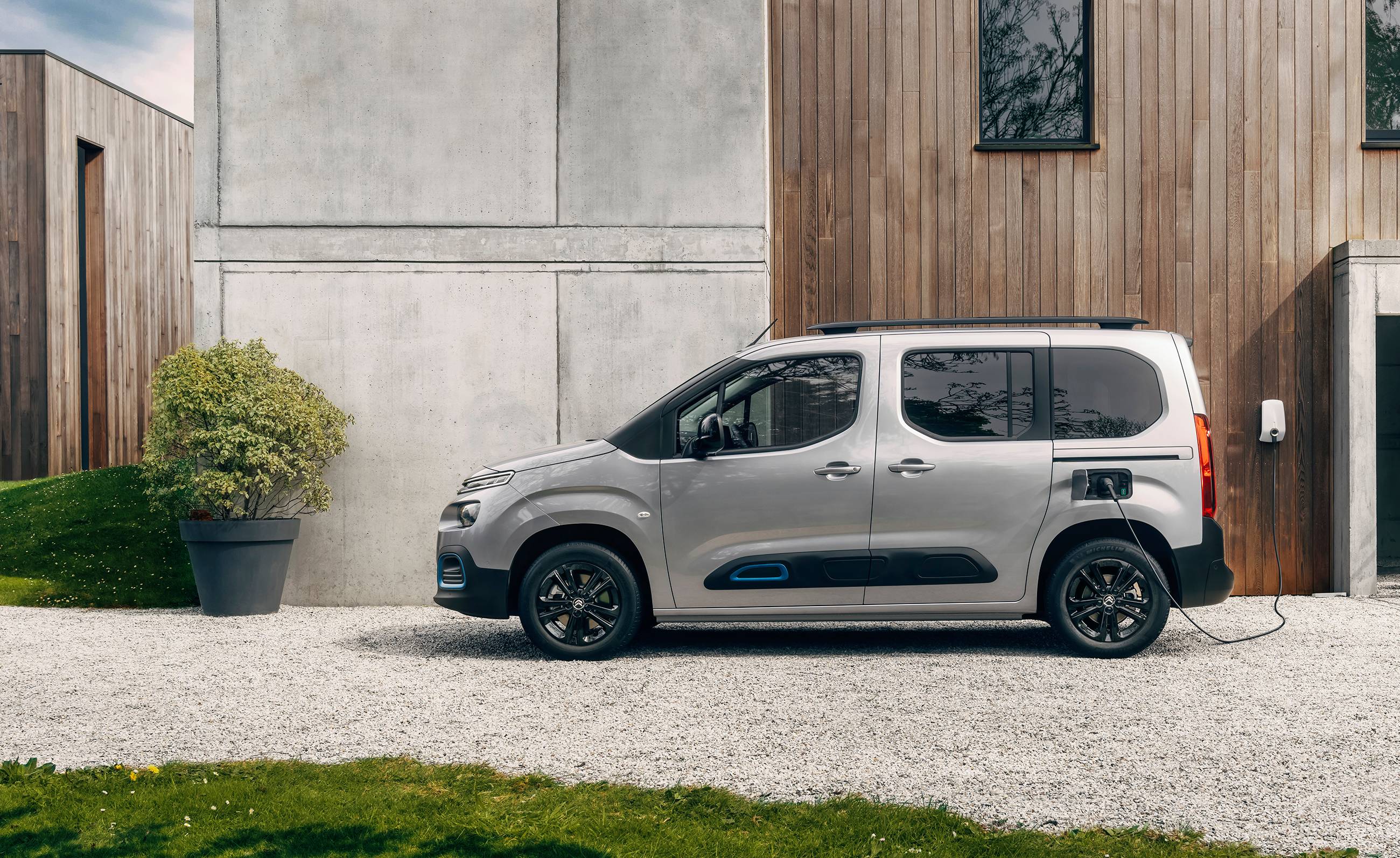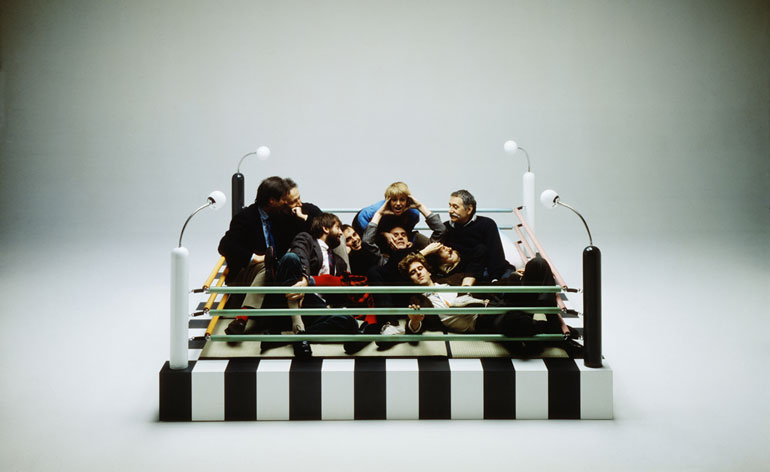Citroën ë-Berlingo: the electric vehicle with a focus on utility
While its range won’t be for everyone, few modern cars are as spacious, simple, and unburdened by image as the Citroën ë-Berlingo

The international design community has a long-standing passion – fetish, even – for quirky French vehicles. It can all be traced back to the legendary Citroën DS of 1955, but many other oddballs, from city cars to limousines and commercial vehicles, have followed, all of which have displayed a streak of idiosyncrasy that’s becoming increasingly hard to find. Citroën has always led the pack, although there have been some notable challengers from Renault and Peugeot along the way.

Some, if not all, of this heritage has been lost to progress. By the time Citroën launched its first Berlingo in 1996, the flimsy angularity of vehicles like the H Van and the 2CV-based delivery vans and pick-ups were not fit for purpose in a world of crash tests and airbags, even if their practicality was undiminished.
The first Berlingo presented the modern face of multifunctionalism. Developed in collaboration with Citroën’s then sister-company Peugeot, it had to do many things; it was both a commercial vehicle and an MPV, with a boxy form designed to maximise interior space and practicality. As with the best pieces of functional design, the Berlingo’s character came from its utility and simplicity.

Of course, no volume carmakers build ‘true’ utility vehicles anymore for European and American markets. Building a car is a complex equation that requires integrating stringent regulations into brand values. As a result, the third generation Berlingo, launched in 2018, has lost a little of the latter. The platform still doubles up as both van and car and is still shared across brands (now extended to Opel and Vauxhall, as well as also being used by Toyota).
As of this year, Stellantis, the parent company that oversees Citroëon, Opel, Vauxhall and other familiar names, has removed the conventionally powered platform from sale to private customers; from now on, Berlingos, along with Peugeot Partners and Rifters, and Vauxhall Combos, are all pure electric vehicles (this doesn’t apply to Toyota’s offering, nor to the commercial variants for the time being).

It’s a bold step, for part of what gave the Berlingo its niche appeal was the combination of rugged simplicity and endurance. It is, after all, still a van with windows punched in it. There are chunky bits of plastic, inside and out, with a jazzy seat pattern marking the only concession to fashion or consumerism.
As an EV, however, it loses a crucial bit of functionality. That’s not because EVs aren’t fit for purpose, but the ë-Berlingo simply doesn’t have the range to do the vehicle justice. The 50kWh battery pack is rated for up to 174 miles, a figure that proved more than optimistic in our hands. As an urban delivery vehicle, this is no problem at all. Even as a taxi, it makes sense (estimates suggest an Uber driver does between 60 to 100 miles a day). But as a go-anywhere machine, it is lacking. Whatever the demerits of the old diesel engine, the combustion-powered Berlingo was once good for 600-plus miles between refills.
Receive our daily digest of inspiration, escapism and design stories from around the world direct to your inbox.

It’s going to be many years before affordable, utilitarian EVs can attain such lofty figures, if ever. In the meantime, Citroën is hoping that a new mindset will emerge, one that favours ultra-small, efficient vehicles for people and light goods, as is the case with its little AMI One. The AMI is the true heir of the 2CV, but it’s still very much a niche outlier – whereas nearly four million 2CVs were built over four decades of production.
In parts of the world where smaller, lighter vehicles aren’t subject to anything like the same kind of safety oversight as the EU and US, anything goes. China’s best-selling EV is the Wuling Hongguang Mini EV, an ultra-compact four-seater with a 75-mile range and not a snowball’s chance in hell of protecting you in a high-impact crash.

Like all of Citroën’s smaller cars, the Berlingo shows us one facet of modern utility, with flourishes of colour and form that exist to serve brand identity, not function. These still don’t detract from the solidity of the basic package. The car is available as an XL seven-seater model, which ramps up the taxi connotations still further (as does the larger ë-SpaceTourer model) but offers unbeatable amounts of space.
Perhaps it’s not time to mourn the death of well-designed utility just yet. If the range is no barrier – and there are plenty of use cases where it needn’t be – then the ë-Berlingo is still a credible machine. Few modern cars are as spacious, simple, and unburdened by image. We can’t wait to see what the next generation brings.
INFORMATION
Citroën ë-Berlingo Electric, from £31,995
Jonathan Bell has written for Wallpaper* magazine since 1999, covering everything from architecture and transport design to books, tech and graphic design. He is now the magazine’s Transport and Technology Editor. Jonathan has written and edited 15 books, including Concept Car Design, 21st Century House, and The New Modern House. He is also the host of Wallpaper’s first podcast.
-
 The new Tudor Ranger watches master perfectly executed simplicity
The new Tudor Ranger watches master perfectly executed simplicityThe Tudor Ranger watches look back to the 1960s for a clean and legible design
-
 This late-night hangout brings back 1970s glam to LA’s Sunset Boulevard
This late-night hangout brings back 1970s glam to LA’s Sunset BoulevardGalerie On Sunset is primed for strong drinks, shared plates, live music, and long nights
-
 How Memphis developed from an informal gathering of restless creatives into one of design's most influential movements
How Memphis developed from an informal gathering of restless creatives into one of design's most influential movementsEverything you want to know about Memphis Design, from its history to its leading figures to the pieces to know (and buy)
-
 Rivian hits Miami Art Week to release R1S Quad Miami Edition, a new colour and a scent
Rivian hits Miami Art Week to release R1S Quad Miami Edition, a new colour and a scentVivid sights and evocative smells are part of Rivian’s quest to humanise its all-electric SUVs
-
 RBW EV brings a much-loved classic sports car aesthetic into the modern era
RBW EV brings a much-loved classic sports car aesthetic into the modern eraThe RBW Roadster and GT hark back to a golden age of sports car design. Under the skin, these British-built machines feature bespoke all-electric running gear
-
 All hail the compact new Renault Twingo E-Tech – the city car is back in style
All hail the compact new Renault Twingo E-Tech – the city car is back in styleRenault continues to pay homage to its heritage by combining it with 21st-century technology. The new Twingo E-Tech is another winner
-
 Genesis turns up the heat with its new Magma performance sub-brand
Genesis turns up the heat with its new Magma performance sub-brandGenesis has revealed the hot new GV60 Magma and striking Magma GT Concept in its quest to own luxury performance
-
 Around London in sybaritic silence with the majestic all-electric Lunaz Phantom V
Around London in sybaritic silence with the majestic all-electric Lunaz Phantom VClassic electrifier Lunaz has turned its skilled hands to the Rolls-Royce Phantom V. We sample the ultimate in zero-emission luxury on the streets of London
-
 Avatr Vision Xpectra concept transforms cars into ‘emotionally intelligent companions’
Avatr Vision Xpectra concept transforms cars into ‘emotionally intelligent companions’Revealed in Munich, electric car maker Avatr’s futuristic Vision Xpectra is a car that is not only beautiful, but a true form of ‘emotive luxury’
-
 Dacia wants to make small cars great again – all hail the new Hipster Concept
Dacia wants to make small cars great again – all hail the new Hipster ConceptThe best way to minimise energy use in all its forms is to downsize. The Dacia Hipster Concept is a smart way of making a practical car way more pint-sized
-
 The Vanderhall Brawley GTS is a compact but mighty electric off-roader
The Vanderhall Brawley GTS is a compact but mighty electric off-roaderDeliveries of Vanderhall’s Brawley GTS have started, bringing zero-emission trail driving to enthusiasts across America